15 Simple Tips for Energy Efficiency While Working from Home

From flexible working hours to unlimited coffee with your sweatpants on, working from home came as a blessing for a lot of us. Just as much as it helps the environment with a lower carbon footprint, it also increases the utility bills at home. And this habit of energy over-consumption without realisation comes from extra hours spent on the computer, keeping the coffee machine frequently on and many more.
Because of the Covid-19 situation and the working from home efficiency, many of us might be working from home permanently in the foreseeable future. With that being said, we need to keep our home energy efficiency in check, which can be achieved with a few simple ways.
This article discusses 15 practical tips to keep your house energy efficient when you’re working from home.
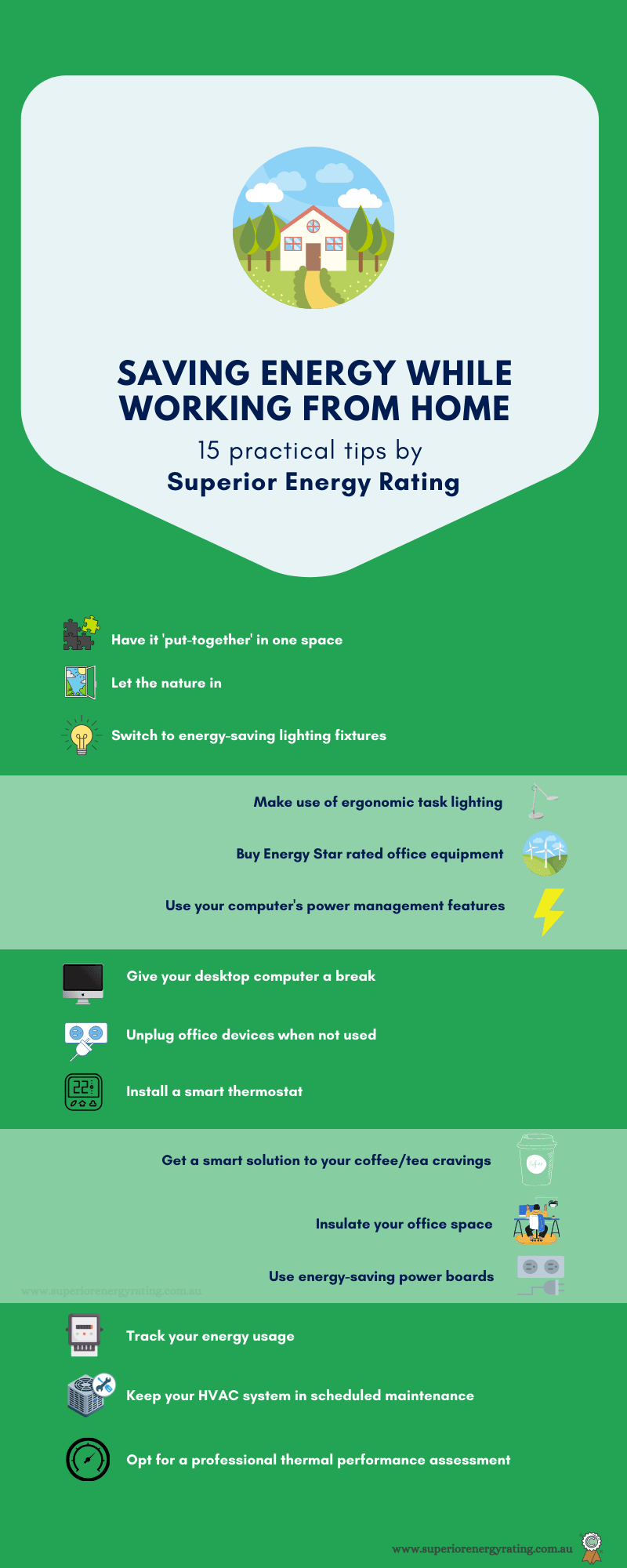
1. Have it 'put-together' in one space
Staying productive in a WFH setting can be quite a challenge, along with keeping up with the extra utility bills, now that everyone is home.
Setting up a dedicated workplace DIY in one space can help you reduce energy tremendously. Accessorize your home office in a room with sufficient natural light, ventilation. In that way, you'll have to make less use of lighting, heating and cooling systems.
Along with saving energy, a delicate workspace will help you concentrate on your work more as well.
2. Let the nature in
A healthy workplace is all about bringing a piece of nature into your home. It's not only about saving energy but also about taking care of your mental and physical health.
Now that you're not stuck in one cubicle anymore- take the precedence of mother nature.
Let the sunlight and fresh air right into your interior workspace. This natural rejuvenation will help you improve indoor air quality, enhance your immune system and overall well being.
3. Switch to energy-saving lighting fixtures
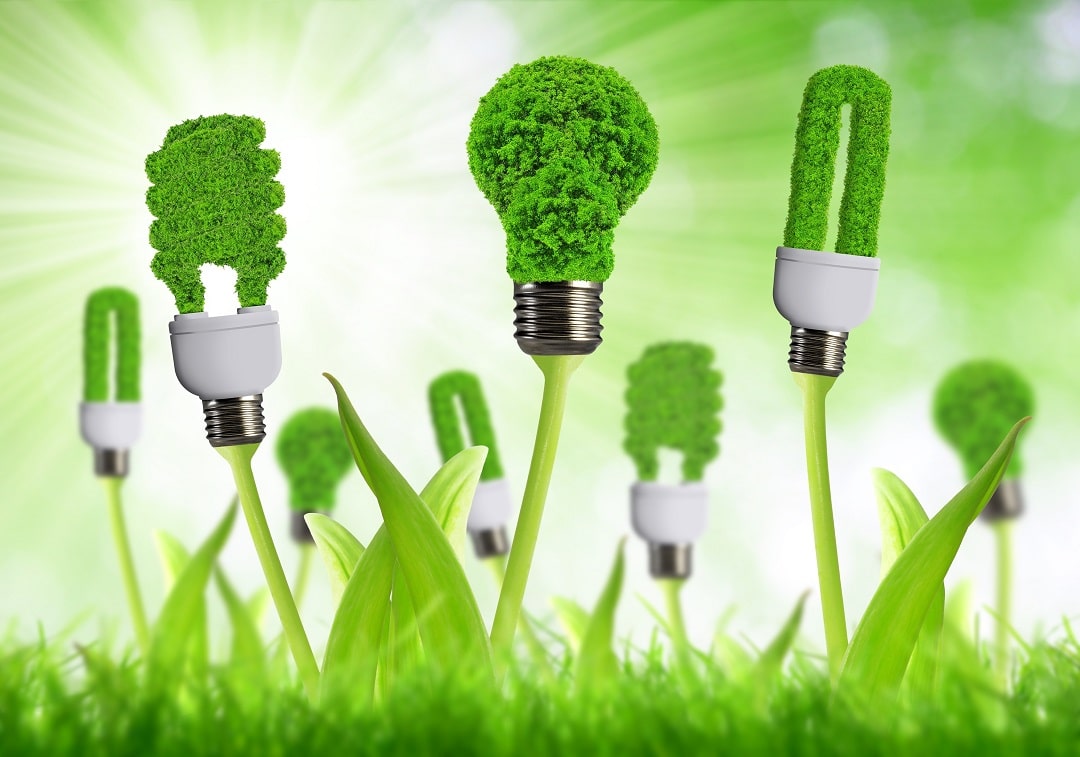
If you have traditional incandescent bulbs, it's about time you switch to energy-saving options like LEDs or CFLs. These high-performance bulbs, flush-mounted fixtures or standing lamps are not just energy-efficient but also inexpensive and eco-friendly.
LED lights use roughly ten or less wattage with increased functionality and maximized illumination properties. Which means greater performance in a lesser number of fixtures!
4. Make use of ergonomic task lighting
In any workplace setting, whether in office or at home, lighting accounts for a significant amount of energy usage, along with contributing to heat generation. So instead of continually using the ceiling lights, switch to LED task lights, or table tamps, as they're less likely to be left turned on!
A well-designed task light offers maximum benefit from a visual air with options like brightness adjustability, on/off control within arm's reach, exceptional focused illumination, and more. The slim and functional styles of these lights also offer incredible comfort with more than 50% energy efficiency than any conventional fixtures.
5. Buy Energy Star rated office equipment
If you want to sustain energy efficiency in work from setting in the long run, consider replacing your old equipment with energy rated office appliances, such as computers, printers, monitors, scanners.
Energy star rated office appliances operate efficiently in standby and sleep modes with different power management options. When not in use, these certified energy rated appliances reduce energy consumption by automatically entering low power or sleep mode. Compared to the standard options, energy star office appliances consume less than 20% energy.
6. Use your computer's power management features
You can reduce both energy consumption and cost by using computer power management features.
Computer power management is a set of features that includes automatically placing computers and monitors into low-power "sleep mode" or "system-hibernation" after a period of activity. Efficient use of these features can help you save at least 10% of your total energy cost.
7. Give your desktop computer a break
Most often than not, laptop computers are not only more accessible but also more energy-efficient than desktop computers, for one simple reason.
Laptops can use battery power and run for a long time. On average, laptops use an average of 20-50 watts of electricity. You can reduce energy usage even less by putting laptops in power saving mode. Desktop computers, on the other hand, use 60-200 watts. All in all, laptops save 80% less energy than desktops.
So unless it's an absolute necessity, make the most out of your laptop. Set your home office in such a way that you can switch from your desktop to laptop whenever needed.
8. Unplug office devices when not used
All the plugged in office appliances you have around your home are secretly bleeding energy without you having any clue! Even when turned off, many office devices keep consuming power as the power supplies don't convert the energy.
In other words, anything with a transformer draws power as long as it's plugged in.
This standby electricity loss and freaky electricity bill situation is also known as "phantom load" or "vampire electricity". Since switching it off isn't enough, take a minute to unplug the device ports of the sockets if you're done using or charging your electrical device. You can also use a standby saver which allows you to turn all your appliances off standby in one go.
9. Install a smart thermostat
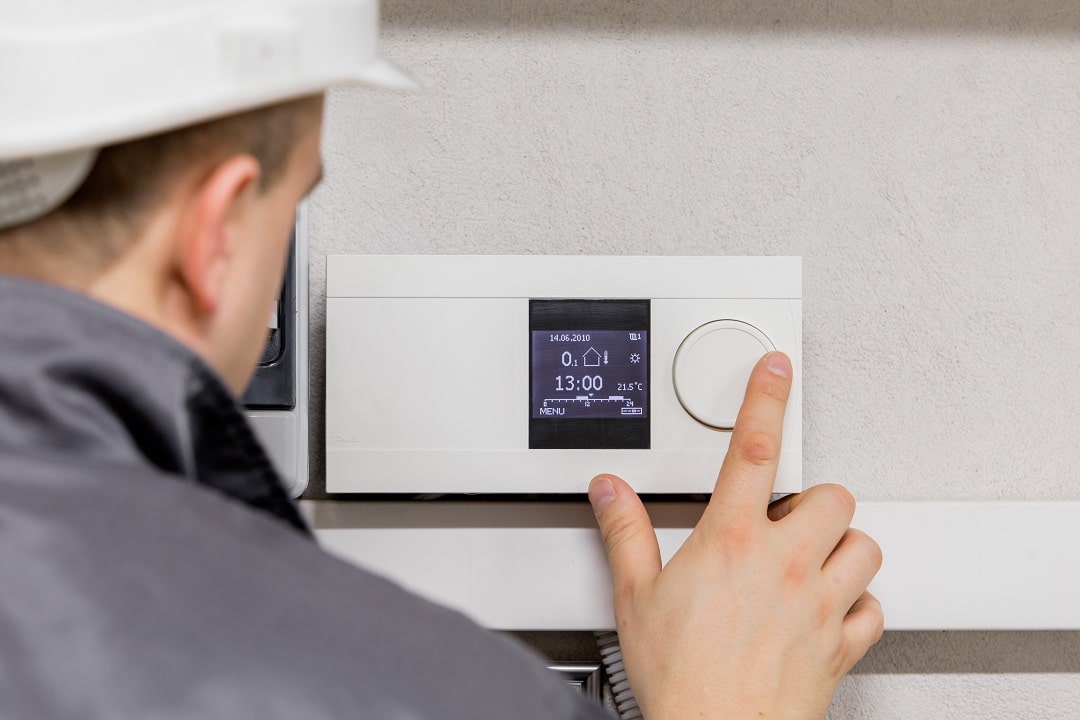
If you want to turn your home office setting not only energy-efficient but also smart and time-efficient, opt to one of the leading technologies of modern homes- the smart thermostat. Instead of making manual thermostat adjustments when your space is too hot or cold, let the smart thermostat take care of it automatically.
Smart thermostat also lets you monitor daily energy usage and allows you to make more efficient plans with thermostat adjustments. A quality smart thermostat can also reduce your energy bills up to 25%!
10. Get a smart solution to your coffee/tea cravings
In an office setting, it's easy to get the benefit of instant boilers for coffee or tea. Now that you're working from home- get yourself a thermos or thermos flask.
Thermos will keep your favourite morning beverage warm for a substantial amount of time without making less use of a boiling kettle or frequently turning on the coffee machine.
11. Insulate your office space
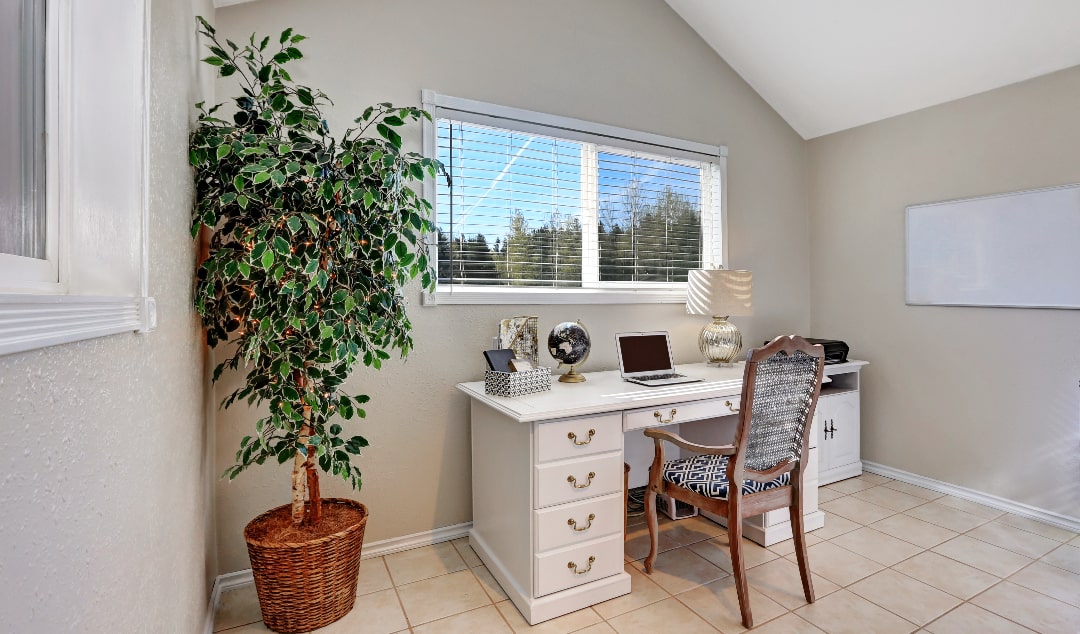
Some simple and affordable room insulation hacks can help you retrieve some energy. Insulation will keep your room warm during winter and stops the flow of heat during summer. In other words, with improved moisture control, you won't have to use your HVAC system as frequently anymore, and your energy bills will be under control.
On top of having a heating and cooling controlled space, proper insulation will also keep your workspace distraction and noise proof. You can even make some DIY insulation fixes with inexpensive materials like fibreglass, polystyrene foam, rock wool.
12. Use energy-saving power boards.
For all of your office appliances, consider making use of energy-saving power boards. Smart power boards can measure the electricity flow from each power socket and detect when devices are in use or on standby mode. When the smart powerboard detects devices in sleep mode, it disconnects that particular appliance's energy flow without disrupting the rest. It immediately recommences energy flow when you're turning the device back on.
With this energy-saving power board, all you have to do is to connect your main tech appliance (e.g., your computer) to the master power sockets. Connect the rest of the appliances to the slave sockets.
If you turn off your primary device, the other socket units will shut down automatically as well to make sure the power isn't wasted on appliances that are on standby modes.
13. Track your energy usage
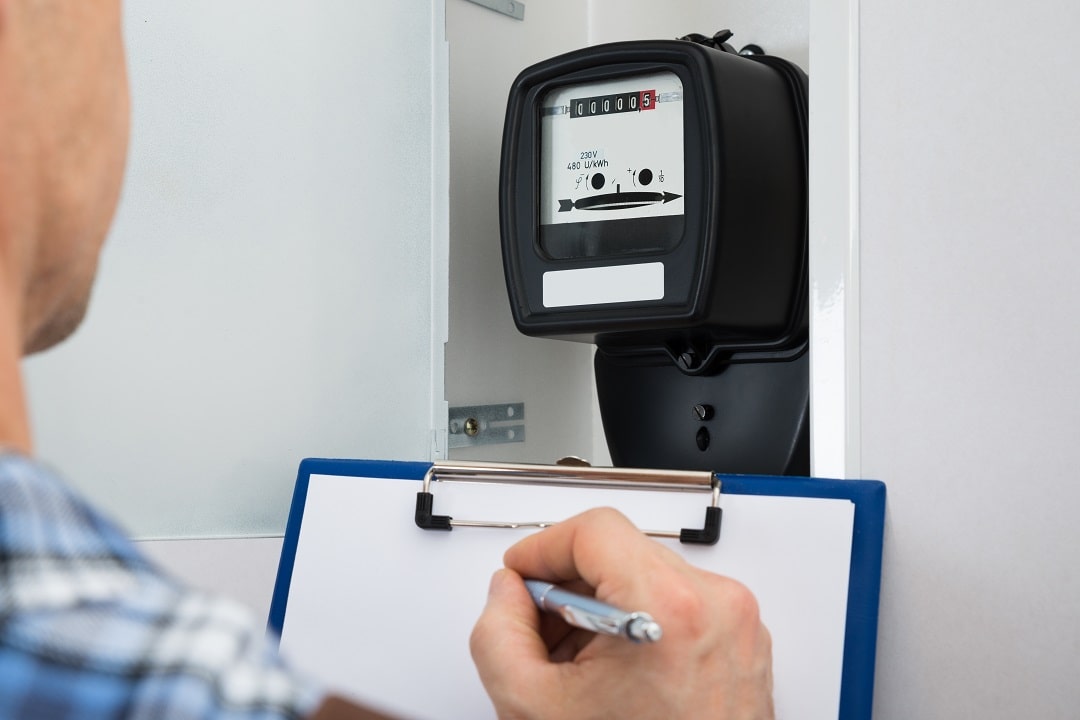
Some applications can help you keep track of your energy consumption. If you have smart meters for electricity, gas and water, add them to the database and record the latest meter readings regularly.
From the entered data, the application will calculate the average rate of energy consumption per hour, day week or month. On the dashboard, you get a graph showing the total consumption rate. If you provide the average cost per unit, the graphs will also show the total cost instead of energy.
14. Keep your HVAC system in scheduled maintenance
One of the best practices for conserving energy at your home, especially the work zone is to operate and maintain your HVAC systems properly. Most often than not, the air filters get clogged by specks of dust and other carbon particles, causing overheating and consuming more energy than it's supposed to.
Make sure to clean and change air filters, along with checking the thermostat setpoints from time to time. Also, check the drain and pan drip lines to avoid possible leakage.
15. Opt for a professional thermal performance assessment
It's always better to get your workspace thoroughly checked by professionals to have a better understanding of all the hidden ways your workspace is actually consuming energy.
Carried out by qualified professionals like Victoria based energy rating consultancy service Superior Energy Rating, thermal performance assessment can help you determine your home's ability to maintain a sustainable, energy-efficient living all year long.
Aside from measuring the heating and cooling loads of each corner of your workspace, the thermal performance audit also helps you achieve the required star rating.


